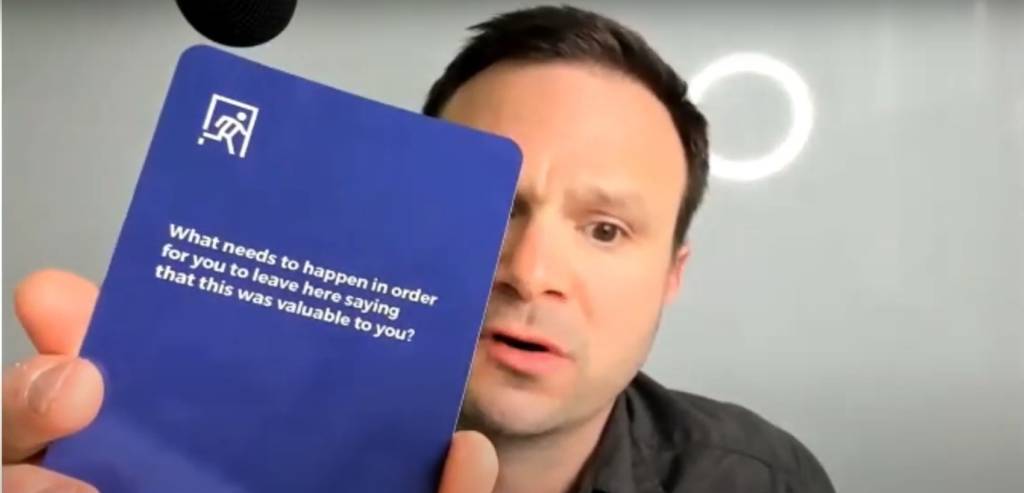Video Transcript
As I continue to meet with managers and team members, there is a common theme
- being short staff,
- feeling overworked,
- people not feeling listened to or heard,
- a lot of fear in their jobs,
- and how they can continue to do great work and serve others.
In those discussions, I found that using some solution-focused questions helped them to identify:
- what is working well,
- what resources they have,
- what small steps or small clues they can take or notice that will show that things are working well
- what to amplify, what to dampen.
Today, I will share six quick questions from my SOLVED solution-focused question deck. Each question will help you and also will help me begin to identify:
- what can I do about my challenges,
- how can I move forward on these things?
Before we go forward, I’ll add the solved questions, and the SOLVED method can be used by yourself, with a partner, or with a team.
I prefer to do it with a team because I like teamwork and the trust and vulnerability it creates.
The first thing is this. Think about or share say out loud a current challenge or something you are stuck on.
When you think about this challenge, the thing you are stuck on identity;
- what’s happening,
- who is there,
- and what variables are impacting the stuckness?
While you’re thinking about that, I will pull out a question from the solved deck. The first question is a situation question.
What needs to happen for you to leave here saying that this was valuable to you?
Think about that when you leave here today, leave the meeting, or end the video. What has to happen for this to be valuable to you?
Next, I’ll pull an observation question.
What does progress look like in the next ten minutes, ten days, ten years?
Write that down.
Identify what progress looks like to you or me.
Ten minutes, ten days, ten years.
Then I will choose a level question.
What is happening right now, that’s maintaining your current level of effort?
What are you currently doing that keeps and maintains your effort, and what you’re trying to do with whatever you are doing?
Next is a validation question.
Wow, your progress is impressive. Share how you got here.
Based on your last answer, maintaining your progress. Share how you got to where you are and what worked well?
What did you do?
How did you make that happen?
Then I will share an exceptions question.
The solution is water, and this challenge is the pipe that water flows through.
Describe the path of least resistance for the water.
Thinking about the situation, you shared the observation of the level where a challenge is, and the validation is working well for you. The question about the water is trying to identify where is the path of least resistance for you to move forward.
How does that water flow through the pipe without getting too many burbles to move things forward?
The last question would be a decision and direction question.
What is the change you will make?
With these questions, as you go through them, Identify the situation, and look at what observations will be supporting.
Identify and level where you are, clarify validation, and what’s working well for you.
Look at exceptions.
Create a decision in a direction that will give you enough of a gentle nudge from behind or a tap from the shoulder behind your back to move forward when you are feeling stuck.
Sometimes that’s all you have to do. Taking the same process to your team is also a way to get them to talk about shared structure. A team using solution-focus makes the team identify what’s working well.
How will others see this?
Where are we now?
How do we make that happen?
Where are things already happening?
And what do we want to do about it?
When stuck, come back to these questions.
Solution-Focus will help you see the path and identify you’ve gone several steps on the path already and that you have the resources to make this work.


